Paperless office 2022: How post-pandemic workplace behavior is shifting towards efficiency

In 2022, most business offices across the US have begun actively implementing — with some resistance on the part of employees — the so-called ‘hybrid work’ model. The number of employees physically present in the office has significantly decreased, so has paper consumption. A paperless office is not a concept anymore, for many organizations it’s reality.
Returning to big city offices is often marketed as “getting back to normal.” However, the very sense of “normality” has changed already, up to the point where we no longer recognize the offices we used to attend on a daily basis just a couple of years ago. So, when “getting back to normal,” where exactly do we find ourselves?
In one of our latest surveys, the airSlate Team was trying to reveal the most meaningful changes in the daily routines of post-pandemic offices. The survey has shown that workplace behavior is shifting towards efficiency. Two years of working from home is a rather long period of time. Understandably, most of the tech changes brought on by the WFH mode have already impacted how we continue working in 2022 and beyond.
This is not our first attempt to highlight the most critical changes in how people manage their work these days. Earlier, we also conducted surveys on the use of eSignatures before and after COVID, on digital adoption process throughout the pandemic, and cloud collaboration amidst remote work. Recently, we’ve also looked into the shifts in consumer awareness of low-code/no-code technologies in 2022.
In this latest survey, we surveyed a sample of 1,000 respondents representing different US regions across different ages, educational backgrounds, and income brackets. Let’s have a look at the changes that took place in work-based document management over the past couple of years.
1. Are people really returning to the office?
Short answer — mostly yes.
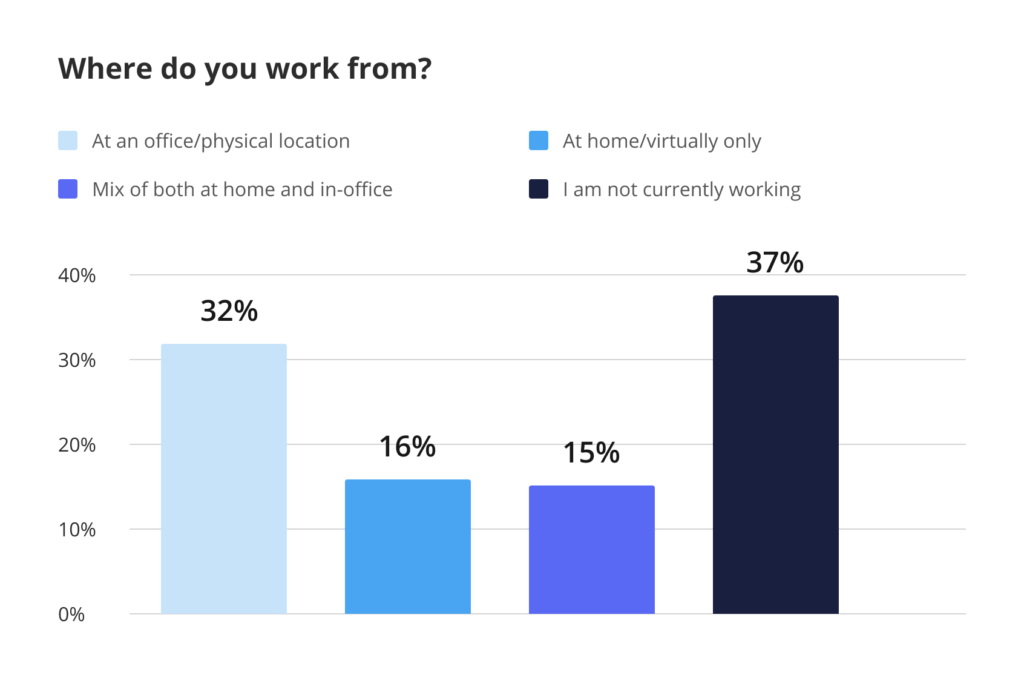
32% of respondents said that they had gone back to the office. 15% more are currently on the so-called hybrid mode, working from home and the office interchangeably. And only 16% of respondents confirmed that they are still working remotely and planning to do so in the near future.
Those who can do quick math here would probably ask, “Where are all the rest?” Unfortunately, as many as 37% of respondents stated they are not currently working. Should we take our survey results with a grain of salt then? Yes and no. Sadly, this result is very indicative of the current labor market: while warehouses, transportation, and some B2C services are experiencing acute labor shortages, office/managerial positions are subject to severe reductions, with thousands of people across every state becoming unemployed this summer.
2. Is the printer still a thing?
Many of us had to master at least a few new software solutions during the pandemic. Video conferencing apps, eSignature tools, and eFaxing were obviously on the rise for the entire two years. But what about now, when almost half of the office labor force is back at the office at least two or three days a week? Have we gone back to the printer-scanner-xerox times?
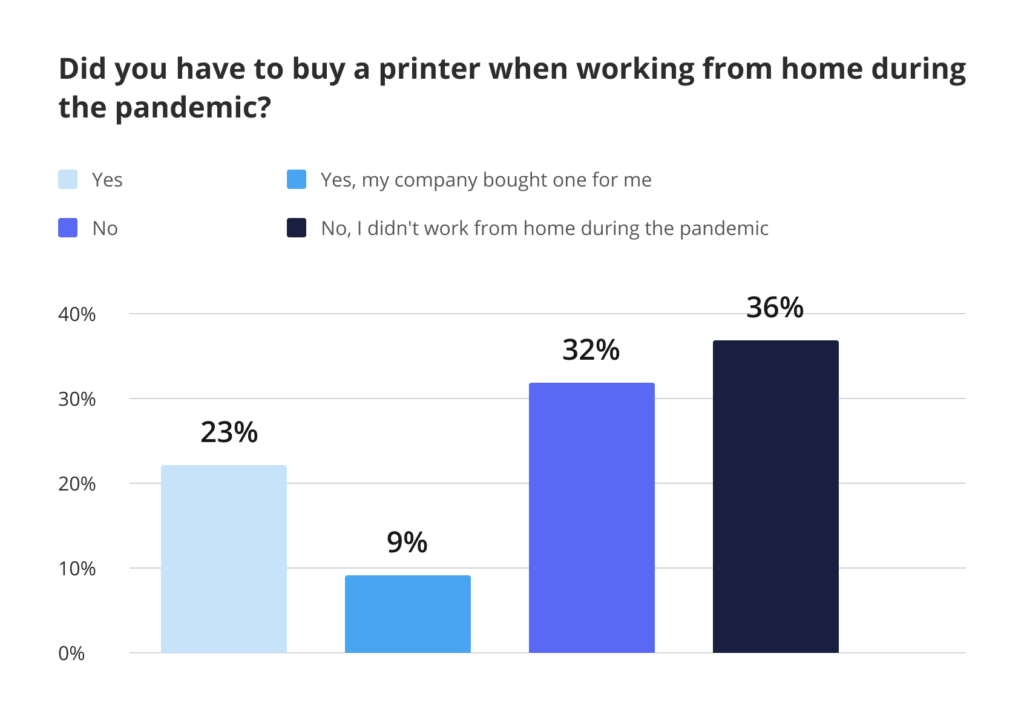
According to our survey results, as many as 68% of respondents did not purchase a printer during the two years of the pandemic. 23% of respondents gave up at some point and bought a printer of their own (old habits die hard!). 9% of the respondents had their employers buy printers for them.
These impressive numbers confirm, yet again, that the digital adoption process has been reinforced by the WFH factor. Almost three-quarters of respondents realized that they can totally do without printers and still be productive and efficient at work.
This result logically led us to another popular office expenditure — paper.
3. Are we any closer to offices going paperless en masse?
Short answer: we are not there just yet, but we’ve made giant steps in the right direction.
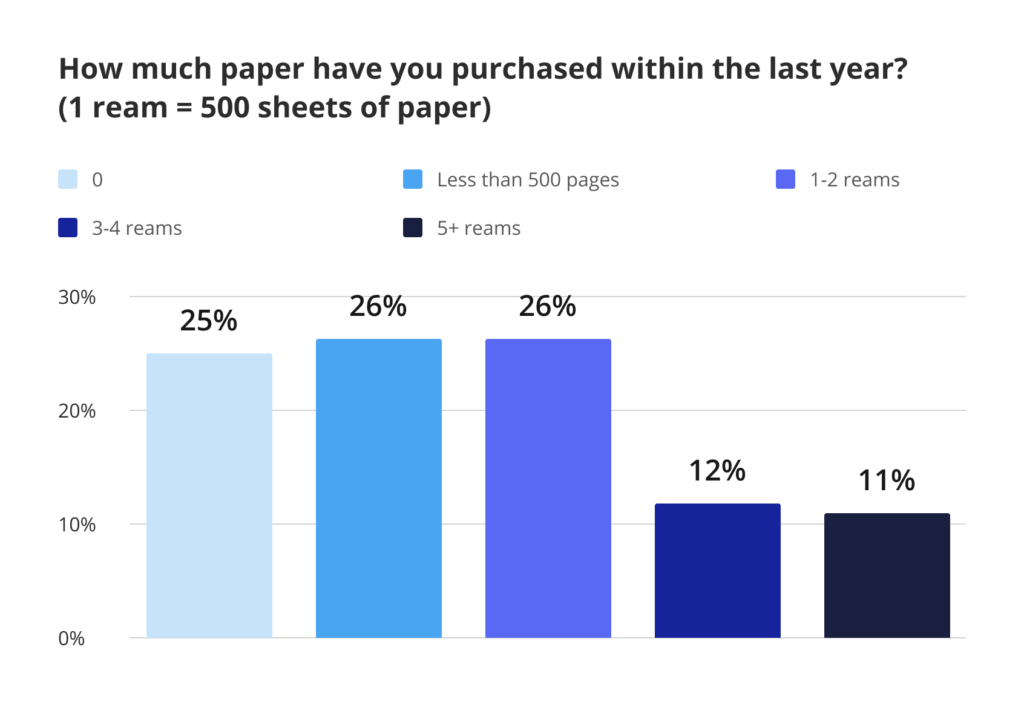
25% of respondents did not purchase office paper in the last year. Another 26% bought and used less than one ream. 26% more used one or two reams throughout the entire year.
In other words, over three-quarters of respondents are already processing all their documents digitally or are at least minimizing the use of paper in their offices and households.
4. And the final question — what’s going on with document approvals?
Generally speaking, going paperless has been a gradual process for all of us. We have switched from paper money to credit cards, then from loyalty cards to shops’ mobile apps. Notes on our phones gradually replaced paper notebooks, and school and university records were all moved to the cloud.
There are still certain categories of documents that require in-person signatures. Does this mean one step forward and two steps back for the digital adoption pioneers? Not really. Let’s look at the specific answers concerning electronic signatures.
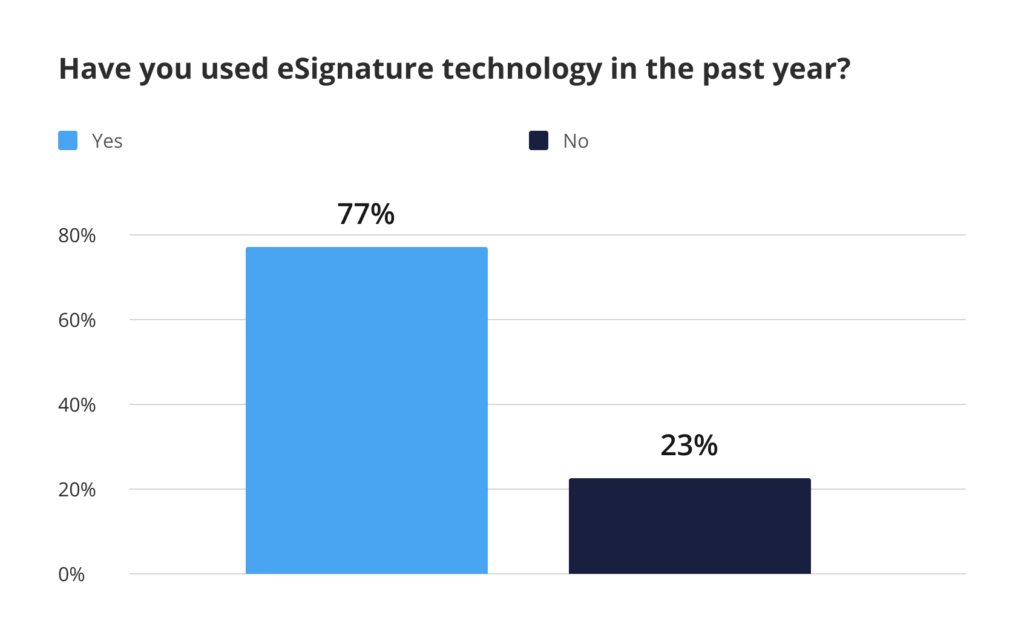
77% of respondents are already familiar with eSigning technology because they’ve used it at least once in the past year.
This rather impressive result is interestingly comparable with another — document loss:
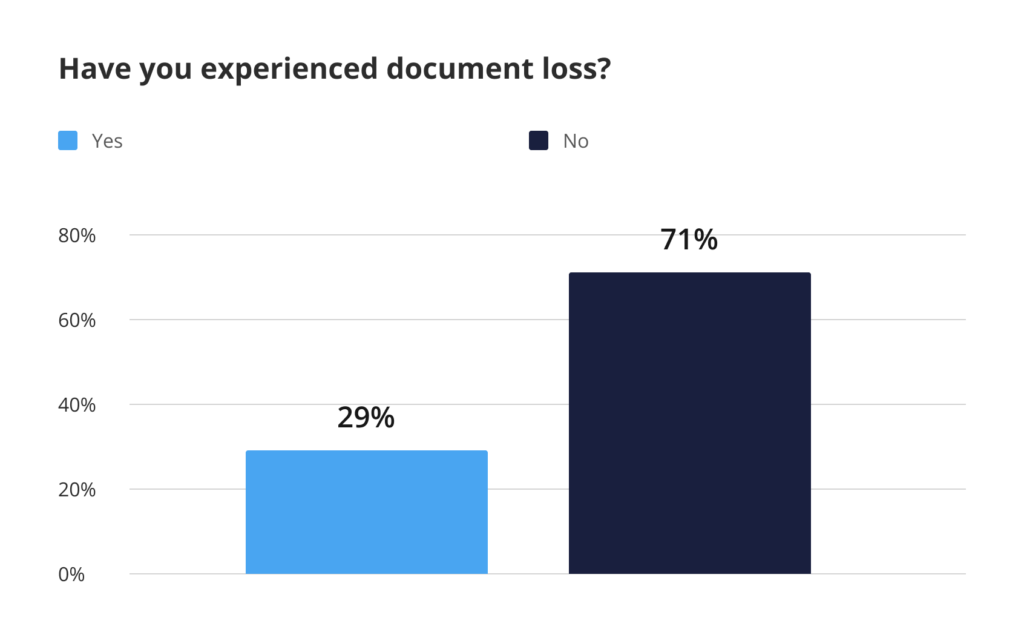
This near-coincidence in the results reveals something interesting:
- 23% of respondents haven’t used eSignature. 29% of them have experienced critical document loss.
- 77% of respondents have used eSignatures; 71% of them never lost an important document they needed to be signed.
The correlation here is self-explanatory.
In conclusion
Some might say that two years of the pandemic’s WFH mode is too short a period of time to reach any meaningful conclusions or produce long-term forecasts when it comes to digital trends or the economy overall. Reality allows us to disagree. We are returning to the office with brand new sets of skills and radically changed attitudes (to work-life balance in particular).
Offices, in their turn, have changed as well. For starters, most of them have become significantly smaller because many companies had to close down their previously spacious offices and rent smaller spaces. Less office space means less space for extra furniture, office equipment, and physical archiving. This is yet another motivation to invest time and resources into digital adoption.
On the other hand, there are changed employee attitudes. While working from home, people quickly realized that virtual operations allow them to get more done in less time. And once you come to appreciate this level of efficiency in your own work, there is no going back. Thus, there is no going back to the pre-pandemic office routine, with its paper, pen, and printer.
*Data powered by Dynata (www.dynata.com), the world’s
largest first-party data and insights platform

